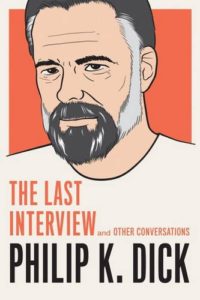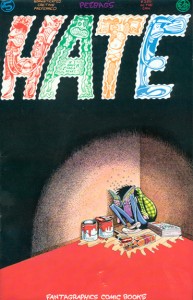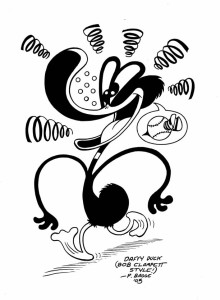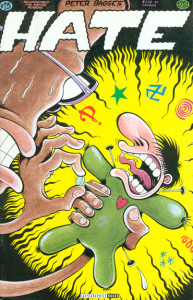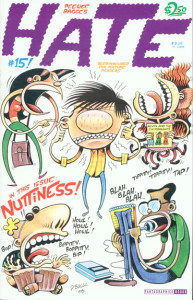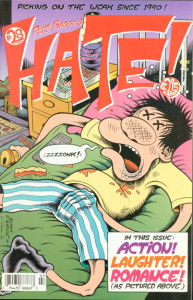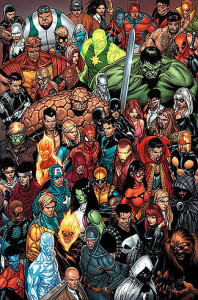One of my complaints about literary magazines—both the small lit mags of university English departments and the literary lions like New Yorker, Tin House, and so forth—is the peculiar absence of up-to-date technology in their fiction. Characters don’t send much email. People rarely text each other. Voicemail is about the most modern of the Information Age conveniences in contemporary literature, and even then, it’s usually summarized by the narrator rather than “heard” by the reader. Why?
It’s no longer cyberpunk for your characters to have instant access to cyberspace in their coat pocket. It’s not science fiction for your character to read the morning news on a handheld view screen. Literary fiction often preens itself as being “realistic” compared to genre fiction, but how realistic is it today for a mother of two in Long Island not to have a 4G touch tablet in her purse or a FitBit on her wrist reminding her she’s not burned enough calories today?
Unless it’s set in the past or some truly remote locale, you forfeit your right to call your story a work of realism if your characters don’t have access to the Internet and they’re not using it fairly regularly. Digital access is simply that pervasive, worldwide. Yes, there are exceptions. I’m certain some writers think their characters or their settings are those exceptions. Probably not, though.
One reason for technology’s absence in literary fiction, I suspect, is that modern tech screws with storytelling. As greater minds than me have pointed out, we live in a age bereft of bar bets. The Guinness Book of World Records was originally conceived to settle pub arguments, but it was Wikipedia that ultimately fulfilled that burning need. Any question we have about the world or history, the answer can be located in an instant.
It carries into personal relationships as well. People no longer craft letters and post them in a box, then anxiously await a reply over the next days or weeks. When I was young, a friend might say he would call at eight—and so I would have to wait by the phone in the kitchen at eight o’clock, telling everyone else in the house not to make a call because I was waiting for one. My parents would wake my brother and I up in the middle of the night to say hello to our Midwestern relatives because the long-distance rates dropped after 11pm. (Remember paying a premium for long distance calls?) For years, many of my extended family members were nothing more than a tinny voice at the other end of a phone line and a yellowing Kodachrome print in my mother’s photo albums.
For all the nostalgia value of these tales, I’m happy to no longer be bound by such ancient analog technology. The key word of modern communications is instant. Unfortunately, such friction-free gratification often runs counter to a lot of storytelling precepts, things like tension (which involves time) and desire (which involves immediacy).
But mostly I suspect the writers of contemporary literature simply don’t like modern tech. Receiving a pop-up on your phone for an email explaining a long-forgotten lover’s death lacks a certain airy elegance that a hand-penned note on hospital letterhead offers. The terseness of SMS and instant messaging grates against the literary author’s desires for eloquence and nuance.
More broadly, there’s a general disdain for popular American culture in our contemporary literature. SUVs and dining at Olive Garden are often literary code words for boorish, crass people. Sympathetic characters tend to read the New York Times on Sunday mornings, walk to work, raise a vegetable garden, and run into friends at farmers’ markets.
This is one reason why I don’t buy the assertion that contemporary American literature is realistic. Too often it presents a world the writer (and their readers) would like to live in. That’s not hard realism. And this restrictive view of proper living feeds back on itself: literary magazines print these stories, developing writers read these stories and think they represent “correct” fiction, and so they write and submit likewise.
Give your characters the technology they deserve. If you’re writing about the past, that’s one thing, but if your story is set in modern times, don’t shortchange your characters’ resources.
Instead of viewing commonplace technology as a liability to storytelling, consider how vital the technology has become for us. Watch this magic trick, from Penn & Teller’s Fool Us:
The audience feels the risks the emcee is taking when instructed to place his own phone in an envelope. The surprise when the mallet is brought out, the tension it raises. Look at the audience’s visceral reaction when the mobile phones are hammered up. Even though Penn & Teller see through the act, there’s a kind of narrative structure to the magician’s “story.” At each step of the act, the stakes are raised.
Do this: The next time you’re out with a group (people you know and people you’ve just been introduced to), pull up a photo or a message on your smart phone, and then hand your phone to someone else. (Or, if someone offers you their phone, take it, twiddle with it, and hand it to another person.) Rare is the person comfortable with this. We don’t like these little things leaving our grasp.
That means, as writers, these devices are a goldmine.
We are wed to our new conveniences in ways we never were with “old” modern technology like microwaves, refrigerators, or even automobiles. Americans may love their cars, but they are married to their smart phones. Our mobile devices are lock-boxes of email and text messages, safe deposit boxes of our secrets and our genuine desires (versus the ones we signal to our friends and followers). Gossipy emails, intimate address books, bank accounts, baby pictures, lovers and lusts—our lives are secreted inside modern technology. This is rich soil for a writer to churn up, this confluence of personal power and emotional vulnerability.
Why dismiss or ignore this? Why not take advantage of it in your next story?

